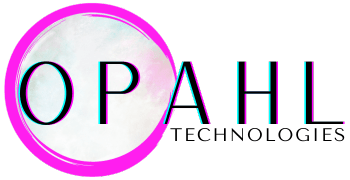Navigating the Transatlantic Divide: The Battle Over AI Regulation
The rapid advancement of artificial intelligence (AI) has sparked a global conversation about the need for effective regulation. As governments grapple with the challenges of balancing innovation and oversight, a new front has emerged in the ongoing tensions between the United States and the European Union. The Trump administration is now pressuring Europe to abandon its proposed rulebook for AI, setting the stage for a high-stakes battle over the future of this transformative technology.
The EU’s Artificial Intelligence Act: A Comprehensive Approach
The European Union has long been at the forefront of efforts to establish clear guidelines for the development and deployment of AI. The proposed rulebook, which is intended to help companies align with the EU’s Artificial Intelligence Act, seeks to enforce stricter standards of transparency, risk mitigation, and copyright compliance among AI developers. This comprehensive approach reflects the EU’s commitment to protecting citizens’ rights and ensuring that AI is developed and used in a responsible manner.
Under the proposed guidelines, AI developers would be required to provide detailed information about their systems, including the data used to train them and the potential risks associated with their use. They would also be expected to implement robust safeguards to prevent unintended consequences and ensure that their systems do not infringe on intellectual property rights. Companies that fail to comply with these standards could face significant fines under the Artificial Intelligence Act.
The U.S. Pushback: Criticisms and Concerns
The Trump administration, however, sees the EU’s approach as overly burdensome and potentially harmful to American companies. In a letter to the European Commission and several EU member states, the U.S. government’s mission to the European Union urged them to reject the rulebook in its current form. Critics argue that the guidelines create unnecessary regulatory hurdles and go beyond the original intent of the Artificial Intelligence Act.
This pushback is part of a broader pattern of tension between the U.S. and the EU over tech regulation. President Trump has repeatedly criticized EU policies as unfairly targeting American companies, likening them to a form of taxation. The administration’s stance on the AI rulebook reflects a desire to maintain the dominance of U.S. tech giants and prevent what it sees as overreach by European regulators.
The Global Implications: Shaping the Future of AI
The outcome of this transatlantic tug-of-war will have far-reaching implications for the future of AI. As two of the world’s most influential economic and technological powers, the U.S. and the EU have the ability to shape global norms and standards for this rapidly evolving field. The divergence in their approaches highlights the complex challenges of regulating a technology that knows no borders.
For companies operating in the EU, the proposed rulebook carries significant weight. Although voluntary, failure to adhere to these guidelines could lead to increased scrutiny from regulators and potentially costly penalties under the Artificial Intelligence Act. This has raised concerns among some in the tech industry, who fear that the additional compliance burdens could stifle innovation and hinder their ability to compete globally.
Bridging the Divide: Finding Common Ground
As the debate over AI regulation intensifies, it is clear that finding common ground will be essential. Both the U.S. and the EU share a commitment to fostering innovation and protecting citizens’ rights, even if they differ on the best way to achieve those goals. By engaging in constructive dialogue and seeking areas of compromise, policymakers on both sides of the Atlantic can work towards a regulatory framework that balances the need for oversight with the flexibility required for AI to reach its full potential.
This will require a willingness to listen to the concerns of all stakeholders, including tech companies, civil society groups, and the public at large. It will also require a recognition that AI is a rapidly evolving field, and that any regulatory approach must be adaptable and responsive to new developments. By working together to establish clear, consistent, and enforceable standards, the U.S. and the EU can help ensure that AI is developed and used in a way that benefits society as a whole.
Conclusion
The battle over AI regulation is a microcosm of the broader challenges facing policymakers in the digital age. As technology continues to advance at an unprecedented pace, governments must find ways to keep up while also protecting the rights and interests of their citizens. The tension between the U.S. and the EU over the proposed AI rulebook underscores the difficulty of this task, but also the importance of getting it right.
As the world watches this debate unfold, it is clear that the stakes could not be higher. The decisions made in the coming months and years will shape the trajectory of AI development and deployment for generations to come. By working together to find common ground and establish a clear, effective regulatory framework, the U.S. and the EU can help ensure that this transformative technology is used in a way that benefits all of humanity.
#AIRegulation #TransatlanticTensions #EUArtificialIntelligenceAct
-> Original article and inspiration provided by Opahl Technologies
-> Connect with one of our AI Strategists today at Opahl Technologies

